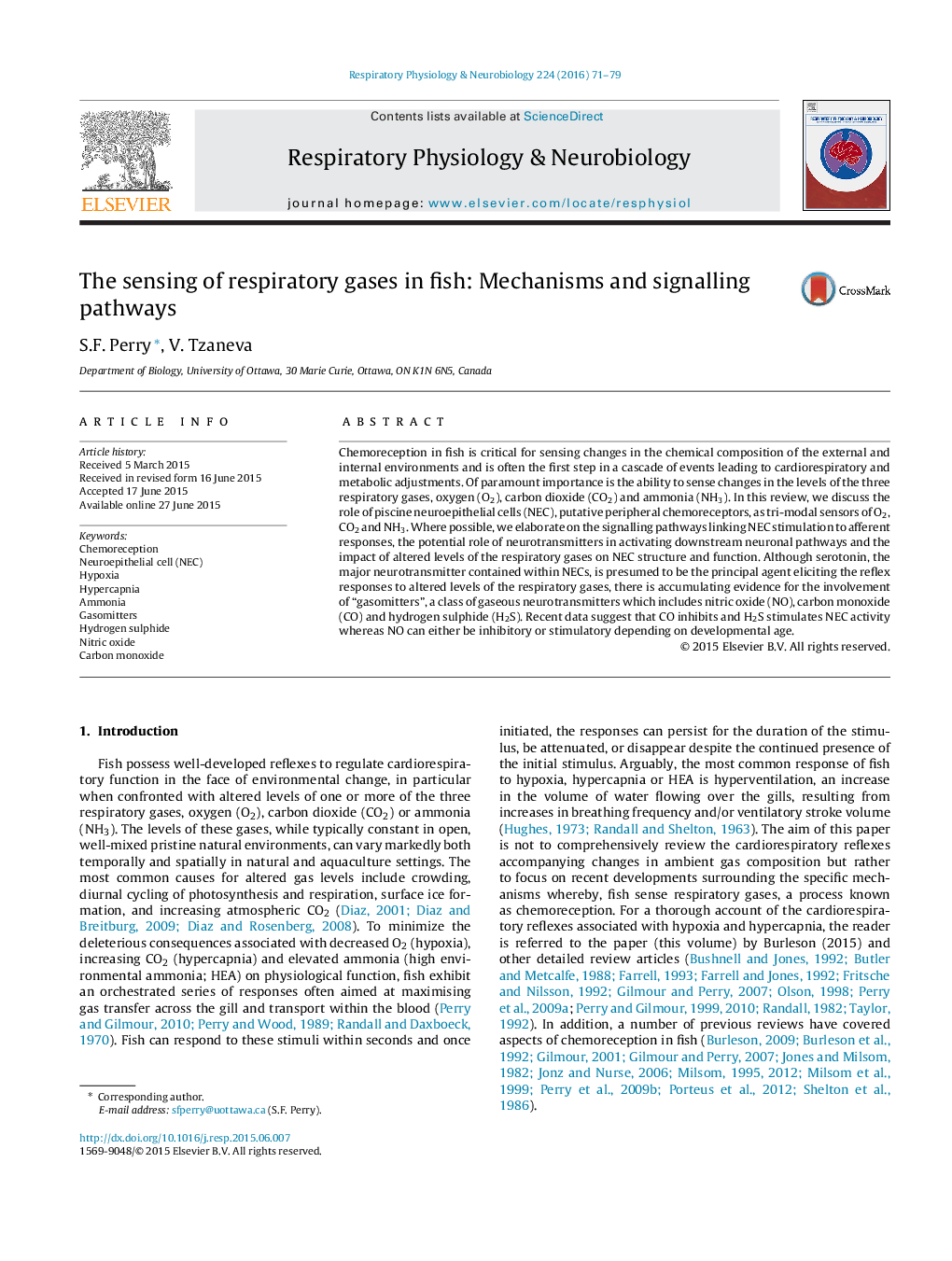| کد مقاله | کد نشریه | سال انتشار | مقاله انگلیسی | نسخه تمام متن |
|---|---|---|---|---|
| 2846772 | 1571306 | 2016 | 9 صفحه PDF | دانلود رایگان |
• We review the mechanisms underlying chemoreception in fishes of the three respiratory gases, oxygen, carbon dioxide and ammonia.
• We summarise the data which suggest that neuroepithelial cells of the adult gill or larval skin are tri-modal sensors of O2, CO2 and NH3.
• There is a specific focus on the role of the three gaseous neurotransmitters, carbon monoxide, nitric oxide and hydrogen sulphide in modulating neuroepithelial function.
• It is proposed that, hydrogen sulphide stimulates while carbon monoxide and nitric oxide inhibit the ventilatory response to hypoxia in adult fish.
Chemoreception in fish is critical for sensing changes in the chemical composition of the external and internal environments and is often the first step in a cascade of events leading to cardiorespiratory and metabolic adjustments. Of paramount importance is the ability to sense changes in the levels of the three respiratory gases, oxygen (O2), carbon dioxide (CO2) and ammonia (NH3). In this review, we discuss the role of piscine neuroepithelial cells (NEC), putative peripheral chemoreceptors, as tri-modal sensors of O2, CO2 and NH3. Where possible, we elaborate on the signalling pathways linking NEC stimulation to afferent responses, the potential role of neurotransmitters in activating downstream neuronal pathways and the impact of altered levels of the respiratory gases on NEC structure and function. Although serotonin, the major neurotransmitter contained within NECs, is presumed to be the principal agent eliciting the reflex responses to altered levels of the respiratory gases, there is accumulating evidence for the involvement of “gasomitters”, a class of gaseous neurotransmitters which includes nitric oxide (NO), carbon monoxide (CO) and hydrogen sulphide (H2S). Recent data suggest that CO inhibits and H2S stimulates NEC activity whereas NO can either be inhibitory or stimulatory depending on developmental age.
Journal: Respiratory Physiology & Neurobiology - Volume 224, April 2016, Pages 71–79
